How has the knowledge economy affected energy use?
Digitalization uses digital technologies and systems to improve, transform, or create processes, operations, and services. It involves integrating digital tools and technologies, especially computers and the Internet, into various aspects of business, society, and everyday life. With globalization, dematerialization, and decarbonization, digitalization is a “megatrend” producing sweeping changes in society and the environment.1 What is […]
The price of power in the United Kingdom, 1300-2000
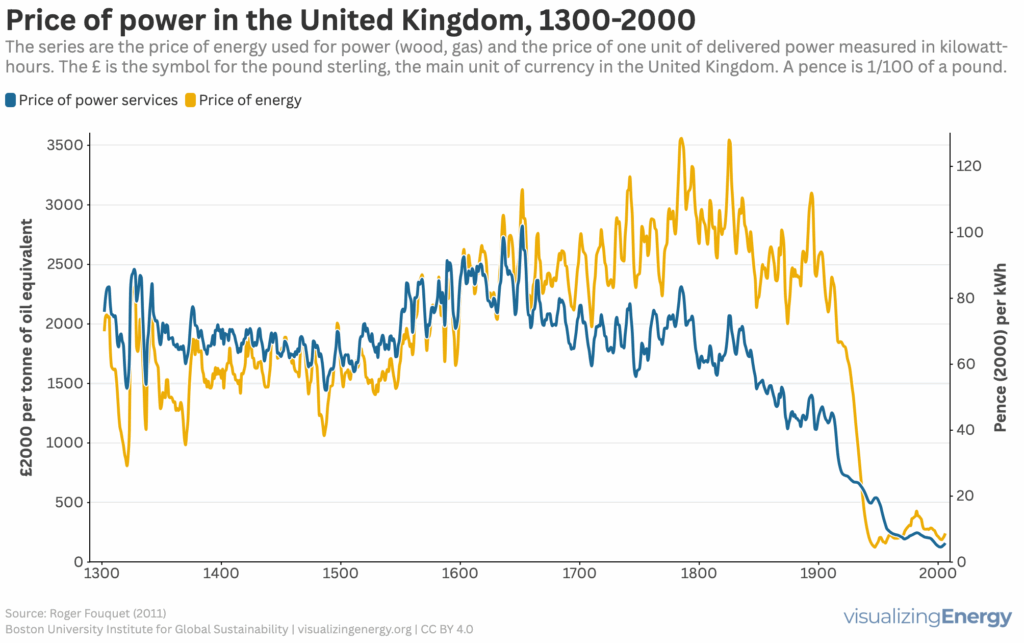
One outstanding feature of historical energy transitions was the change in the cost, power, and efficiency of the energy converters that humans used to perform useful work. These included animate energy converters such as people and draft animals, and inanimate energy converters such as water wheels, windmills, sailing ships, steam engines, internal combustion engines, and […]
Sankey diagrams for national energy systems

In 1898, H. Riall Sankey developed a diagram illustrating steam engine efficiency, leading to the widespread use of Sankey diagrams for visualizing energy flows in various systems. They effectively display energy extraction, transformation, consumption, and losses while mapping the roles of primary and secondary energy sources across different usage sectors.
Explore hydrogen district heating with Sankey diagrams
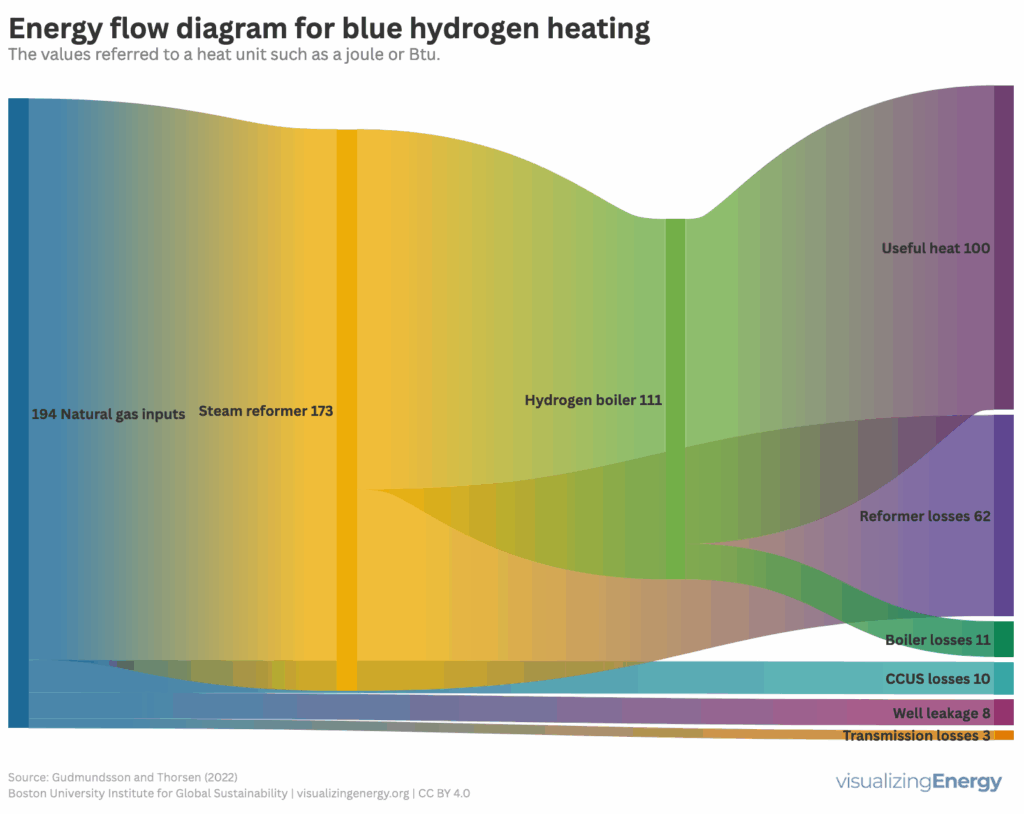
The article examines hydrogen energy as a decarbonization strategy, focusing on its use in district heating systems. It highlights efficiency comparisons between blue and green hydrogen pathways, emphasizing that district heating is generally more efficient and cost-effective. Despite its advantages, high initial costs and regulatory challenges hinder widespread adoption.
The price of household heating in England, 1300-2000

Energy historian Roger Fouquet’s analysis of historic energy transitions in household heating in England from 1300 to 2000 reveals interesting trends. The shift from wood to coal and later to natural gas resulted in fluctuations in fuel prices. Despite the increase in energy costs, improvements in technology and air quality led to a significant decrease in the price of heating services by 2000.
Where are the gasoline superusers in the United States?
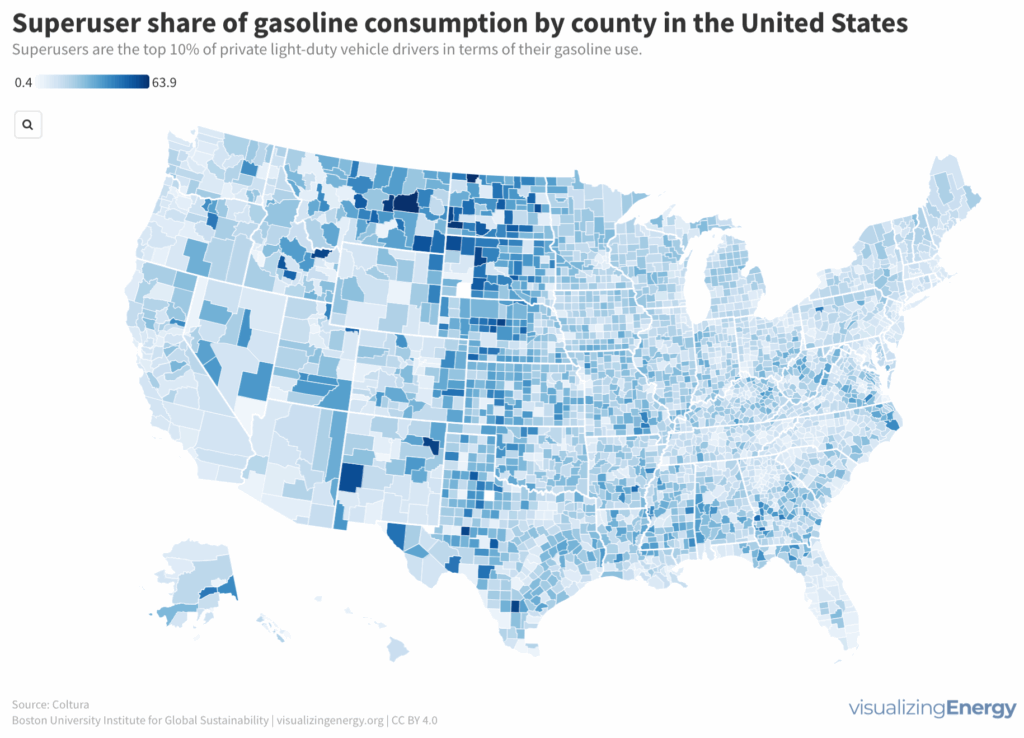
In 2023, US drivers consumed 376 million gallons of gasoline daily, with superusers accounting for 35% of usage. Rural areas have more superusers, spending 10.2% of their income on gasoline. They also tend to drive larger, less fuel-efficient vehicles. Electric vehicle policies targeting superusers could reduce energy burdens and emissions, benefiting low-income households.
Where are light-duty electric vehicles the most popular?

The shift from fossil fuel-powered internal combustion engine vehicles to electric vehicles is a key strategy for reducing transportation emissions. Various regulations and incentives at the state and national level drive this transition, with California leading in policies and EV registrations. The growth of EV sales is supported by policy, lower prices, improved range, and expanded charging infrastructure.
How did people benefit from energy transitions in the United Kingdom?

Historic energy transitions, primarily driven by fossil fuels, significantly improved human well-being, measured through consumer surplus. In the UK, transitions from stagecoaches to railways to cars, and from candles to gaslight to electric lighting, substantially increased consumer surplus. However, these benefits diminish as societies reach high well-being levels.
Why the weight of your personal vehicle matters
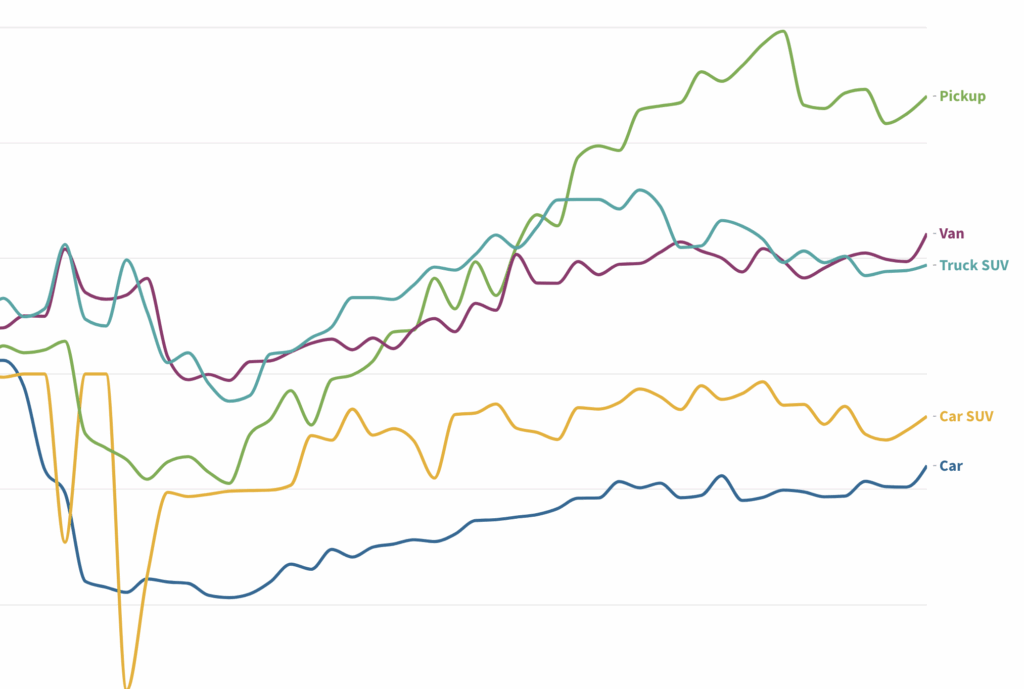
The fuel efficiency of personal highway vehicles, particularly gasoline-powered cars and trucks in the United States, is a crucial factor in energy consumption. Vehicle weight significantly affects fuel efficiency due to basic physics principles like inertia and rolling resistance.
Two centuries of declining prices for personal transportation in the United Kingdom
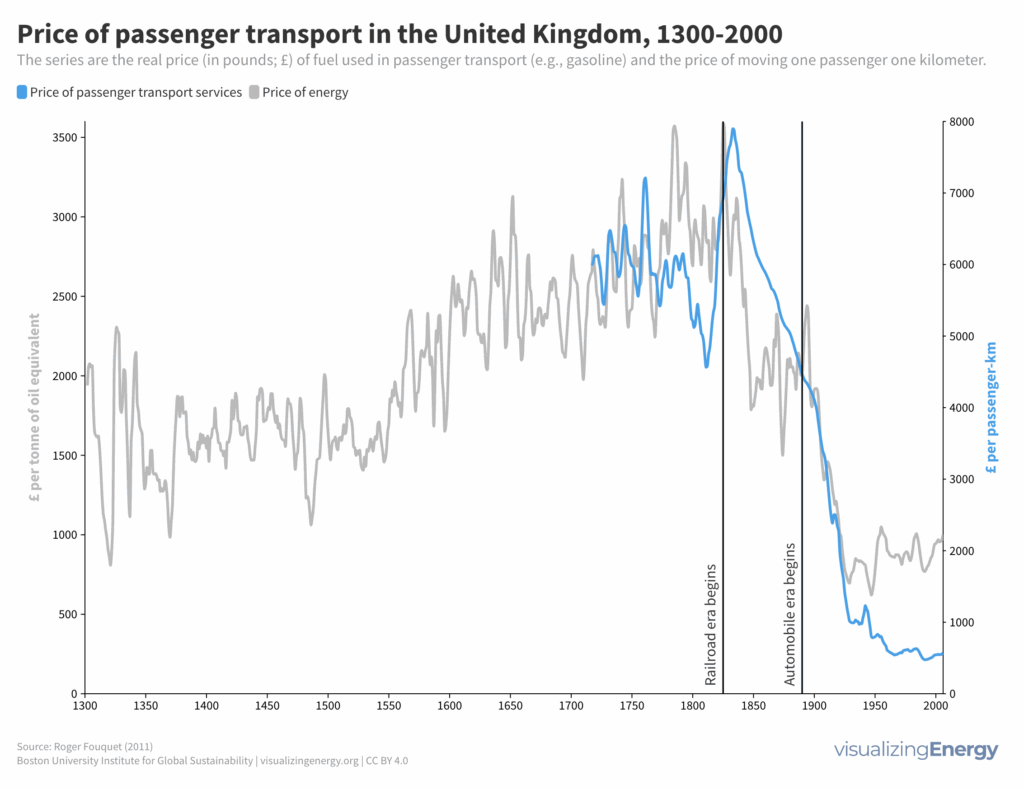
Access to personal mobility has played a crucial role in people’s life satisfaction, with personal vehicles revolutionizing daily life since the early 1900s. The number of global car registrations has dramatically increased over the years, reaching 1.1 billion in 2019. The energy historian Roger Fouquet explored the impact of personal transportation services in the United Kingdom from the 14th to the 20th century, revealing the economic, social, and environmental changes brought about by the expansion of personal travel.
